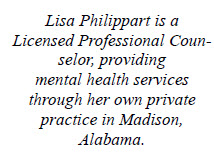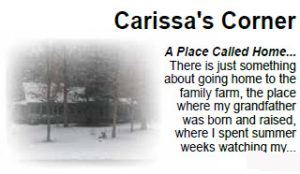 By: Lisa Philippart
By: Lisa Philippart
Before wrapping up this series on anger, I want to help you to understand that anger takes many forms. Of course, there is the obvious cartoony picture of anger that we all imagine, which usually involves yelling and shouting, faces turning red, steam coming out of ears, etc. But there’s probably a much wider diversity of forms that anger can take (in fact, it may be arguable whether anger is actually a single thing or not.) It’s important to be aware of these sometimes subtle forms or variants of anger because there’s a good chance some of these play a strong role in your own life. Let’s look at a few examples of the non-obvious forms of anger and how they can operate.
 Impatience is anger along the dimension of time. We become impatient when we have a specific timeline in mind for something and that timeline is forgotten or dismissed by others. As a result, our expectation of what should happen is violated and we feel anger in the form of impatience, along with the impulse to hurry things along. Chronic irritability is often a sign of unaddressed anger. When you are consistently angry and upset about something but are unable (or unwilling) to understand it better or take action to address the issue at hand, you may find yourself frequently out of sorts or snippy with people, overly sensitive to criticism, or simply agitated much of the time. Like irritability, resentment is the result of unacknowledged or under-addressed anger. But in the case of resentment, it’s directed at another person specifically. Resentment often builds up between people—couples especially—when one person wants something of the other, but either does not know how to ask for it or is afraid to speak up for themselves. Assertiveness is the “cure” for resentment.
Impatience is anger along the dimension of time. We become impatient when we have a specific timeline in mind for something and that timeline is forgotten or dismissed by others. As a result, our expectation of what should happen is violated and we feel anger in the form of impatience, along with the impulse to hurry things along. Chronic irritability is often a sign of unaddressed anger. When you are consistently angry and upset about something but are unable (or unwilling) to understand it better or take action to address the issue at hand, you may find yourself frequently out of sorts or snippy with people, overly sensitive to criticism, or simply agitated much of the time. Like irritability, resentment is the result of unacknowledged or under-addressed anger. But in the case of resentment, it’s directed at another person specifically. Resentment often builds up between people—couples especially—when one person wants something of the other, but either does not know how to ask for it or is afraid to speak up for themselves. Assertiveness is the “cure” for resentment.
 In one sense, frustration is simply a milder form of anger. It is the emotion we feel when we have a goal or desire and are thwarted in reaching it for one reason or another. But I’ve also found that many people use the term frustration as a way to avoid using the term anger. These people feel as though it’s wrong or bad to feel angry, so they compensate by using other similar terms like frustrated or upset. The problem is, if you are consistently angry about something but continually downplaying it by labeling it as frustration, that anger is likely to go unaddressed longer than it should. Passive-aggressive communication happens when we want to get a jab in or make someone feel bad, but we want to appear good at the same time. The most common form is sarcasm, which is just an insult disguised as a joke. Ultimately, we’re passive-aggressive in our speech because we want to be aggressive toward someone else without taking responsibility for it.
In one sense, frustration is simply a milder form of anger. It is the emotion we feel when we have a goal or desire and are thwarted in reaching it for one reason or another. But I’ve also found that many people use the term frustration as a way to avoid using the term anger. These people feel as though it’s wrong or bad to feel angry, so they compensate by using other similar terms like frustrated or upset. The problem is, if you are consistently angry about something but continually downplaying it by labeling it as frustration, that anger is likely to go unaddressed longer than it should. Passive-aggressive communication happens when we want to get a jab in or make someone feel bad, but we want to appear good at the same time. The most common form is sarcasm, which is just an insult disguised as a joke. Ultimately, we’re passive-aggressive in our speech because we want to be aggressive toward someone else without taking responsibility for it.

Anger takes many forms, from mild impatience to road rage. To better understand your anger, increase your emotional vocabulary by making clear and specific word choices to describe your feelings. It’s important to understand the psychology of anger because understanding how anger actually works is key to developing healthy and effective strategies that work in a healthy way.
By: Lisa Philippart
Licensed Professional Counselor







